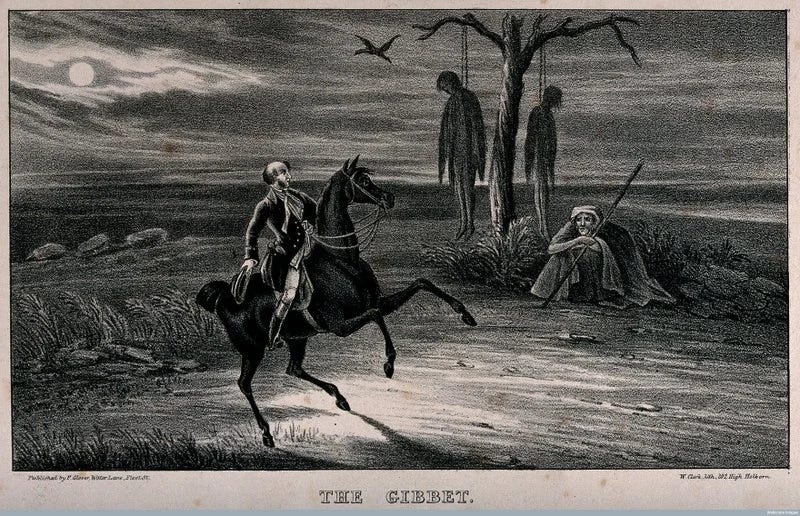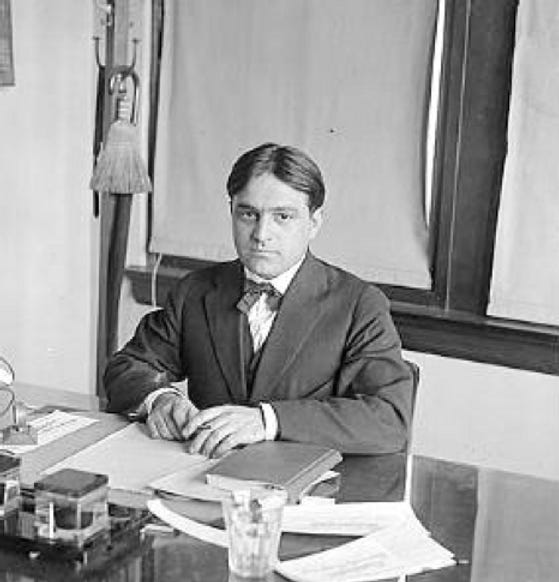Ellis Island was named after Samuel Ellis, the last private owner of what was to become the United States' principal immigration reception center. Many years earlier, and for most of the early 19th century, New Yorkers called this place Gibbet Island because of the wooden gibbet posts where bodies of deceased pirates and mutineers were displayed for the world to see on nooses of chain.
Medical Exams at Ellis Island
Upon arrival at Ellis Island, immigrants were ushered into a room called the Great Hall and paraded before a series of medical officers for physical inspection. Most were allowed to pass by in a matter of seconds, but those whom the doctors deemed physically or mentally deficient were marked with chalk and taken away for additional screening.
Questionable candidates were forced to submit to more detailed questioning and medical exams, and any signs of contagious disease, poor physique, feeblemindedness or insanity could see an immigrant denied admittance on the grounds that they were likely to become a ward of the state.
Below is an excerpt from my novel The Bomb Squad describing the process.
From Chapter Two of The Bomb Squad:
Harold turned his back, picked up a piece of chalk and wrote large letters in three rows on the blackboard. When he finished, he faced the audience and said, “As the men, women, and children make their way through the line, we station PBS officers every few yards to observe and provide what we call the physician’s gaze. If a condition is visually apparent, we write a letter in chalk on the back shoulder of the immigrants’ garment.”
A hand rose in the audience and asked, “What do these letters mean?”
Harold showed his palm, and said, “I was just about to get to that.”
He drew an X and said, “X refers to a suspected mental defect. An X with a circle around it means there’s reason to believe that there are signs of mental disease. C is a suspicion of conjunctivitis. CT is for trachoma. E is an eye condition. F is for an ailment upon the face, and F+ shows something is wrong with the feet. H refers to the heart. L is lameness and N is a condition with the neck. P is lungs and Pg is pregnancy. S is senility and Sc is the scalp.”
Name Change at Ellis Island
American cultural lore is rich with tales of immigrants’ ethnic sounding names being Anglicized or shortened during their passage through Ellis Island, yet there is no evidence that such a practice ever took place. Immigration officials merely checked the person’s identity against the manifests of the ships that brought them to America, and there was no policy advising them to alter their name. Some immigrants voluntarily chose to change their names to help assimilate into American culture, but they did so before they left their home country, or after they had gained admission to the United States.
Below is an excerpt from my novel A Cobbler’s Tale describing an experience.
From Chapter Two of A Cobbler’s Tale:
As he stepped off the barge, Pincus was thrilled to be on firm ground. Carrying his valise and wearing his winter coat, he felt sweat trickle down his forehead and the back of his neck. It was the middle of summer, and he was either carrying or wearing all his clothing. He could feel his undergarments growing damp from perspiration.
He was led into the South Hall where the inspection process began. As he waited his turn, Pincus watched as doctors scribbled a chalk mark on some of the immigrants’ lapels. He would later learn that the letters B, C, or F were codes that identified an illness that required further examination and would eventually be probable cause for refusing entry into America.
Pincus took a deep breath to calm his nerves when his turn came. The cooler interior of the hall had evaporated the sweat, but he was not the epitome of health. All was going well until the doctor, a young man probably just out of medical school said, “This may hurt.” He pinched Pincus’s eyelids and yanked them up and over a metal buttonhook.
“What are you doing?” Pincus yelled in Yiddish.
It didn’t matter what language was used, the entire medical staff knew what it meant. They were checking for a common eye disease in Southeastern Europe called trachoma.
Fiorello La Guardia
Before he became the first man to win three consecutive terms as mayor of New York, the fiery and reform-minded politician Fiorello LaGuardia spent three years on staff at Ellis Island between 1907 and 1910. The son of Italian immigrants, LaGuardia was fluent in Italian, Croatian and Yiddish, and served as one of the island’s many translators while attending NYU law school at night. LaGuardia would go on to represent many Ellis Island immigrants in deportation cases during his early years as an attorney.
Below is an excerpt from my novel A Cobbler’s Tale describing Pincus meeting La Guardia.
From Chapter Two of A Cobbler’s Tale:
Pincus apparently passed the medical inspection and was still rubbing his abused eyelids while he waited for his interview in the Registry Hall on the second floor. When he was called, he stood across a podium from a man with a name tag that read Fiorello LaGuardia. Pincus stared at the Italian name as he waited for the young man to read whatever he was holding.
“You speak Yiddish?” asked LaGuardia looking at papers in an open folder on his desk.
“Yes, I do.” said Pincus, who was surprised to hear this Italian man speaking his mother tongue.
“Good, he continued in Yiddish. “I have a few questions to ask and then you can be on your way.”
Pincus was pleased that he had spent many hours studying the questions with a group of single men during the voyage. Because of this, he knew what the Fourth of July was, how many stripes and stars there were on the American flag, and who was President of the United States.
“William Taft,” Pincus said with his very heavy accent.
An hour later, Pincus was walking down the stairs and out into the sunlight on a path that led to the ferry to New York City. To his great delight, there stood Jakob with a huge smile, his arms spread wide, and announcing, “Welcome to America!”
A COBBLER'S TALE
Jewish Immigrants Story of Survival,
from Eastern Europe to New York's Lower East Side
A Cobbler’s Tale is an adventure story about Pincus Potasznik, a second-generation Jewish cobbler, born in a small shtetl in the province of Galicia, part of the former Austro-Hungarian Empire.
In 1910, at the historic height of the massive Eastern European immigration wave to the New World, Pincus decides to leave behind his pregnant wife, and three small children, in order to seek a new life for his family in the burgeoning Lower East Side of Manhattan.
On his traumatic voyage across the Atlantic Ocean on the SS Amerika steamship, Pincus meets Jakob Adler, a young man running from an accidental murder of a notorious crime boss in Warsaw.
The story also explores the challenges of pregnant Clara Potasznik as she does her best to protect her family, while the bloodiest battles of World War I explode within miles of her family home, a small village called Krzywcza.
Moshe, the young son of Pincus and Clara Potasznik, discovers his divine ability to foretell dire events, and to offer real comfort those in pain, taking the reader into the wisdom and mystery surrounding the ancient Jewish mysticism, known as Kabbalah.
A Cobbler’s Tale is a story of a family’s survival against tremendous odds.













